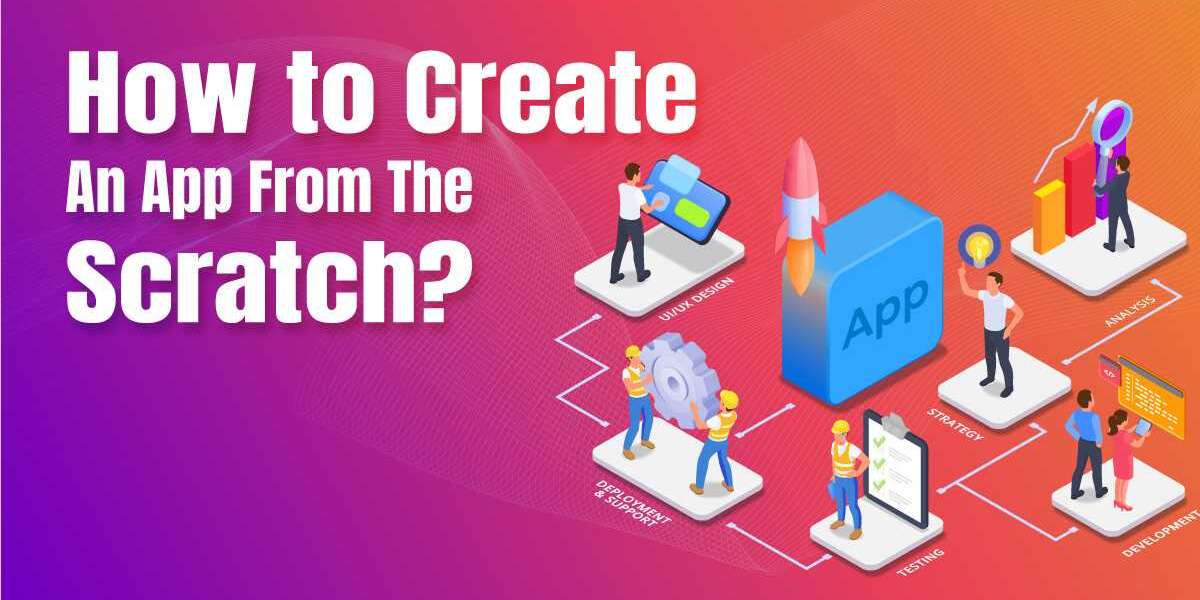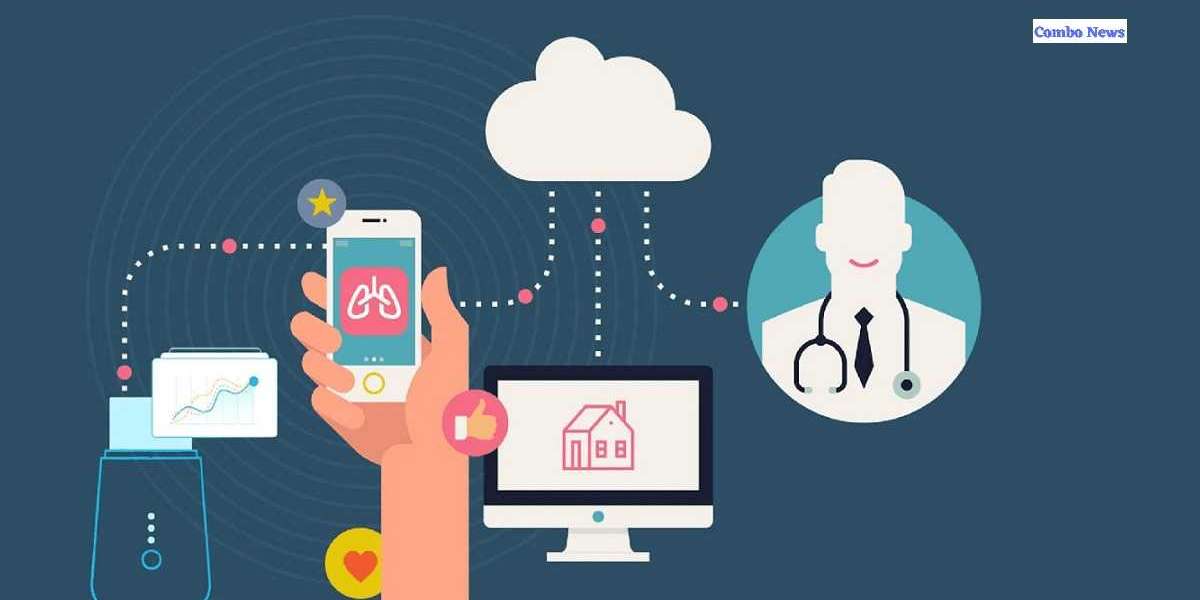We all have witnessed the rapid increase of mobile App users from the last decade. Creating an App is not just an intelligent decision to digitally take a step ahead in your business, it is now an essential aspect of any business in the world nevertheless.
1. Define Your App Objectives
Yes, we all know that the ultimate goal of any business is to generate a million-dollar revenue and an App business is pretty much capable to achieve that and more, however we suggest take one step at a time. First of all, define what Major Problem that your app is going to solve, then define secondary problems too. Figure out what is not already in the market that your app can fill with i.e Do an App Gap Analysis. Brainstorm about the main objective your app is going to serve. Will the app enhance the experience of all your customers or will it be generating sales and purchases? Will this App offer a unique technology that makes users life easier, or the app is going to be an extension of your existing business? Once you’ve figured out the Gap, Opportunity, and Problem then you can build an App startup business around it.
2. Do App Competition Research, Analyze, Validate App idea, build a strategy
Even before you start thinking of actually creating an App, it is very important to do a deep App competition research, analysis, and know how to validate your app idea, and Build a strategy for MVP App Development, Full App Product Development, and launch and growth and of course, Exit!
Once you research on your competitors App, you may end up with one or more of the following scenarios:
Scenario #1 Your App idea is absolutely unique and there is no existing App which remotely does what you want your App to offer.
Scenario #2 There are similar Apps out-there but you see a big opportunity to fill the gaps they’ve left.
Scenario #3 The Market is saturated with many Apps similar to your App idea.
Scenario #4 Your App is an extension of your existing brand, product, services so competition doesn’t bother.
3. Define your App’s USP or Unique Bragworthy Proposition
The concept of UBP in case of the Apps means you need to make your App product in such a way and position it in such a way that their users just not get benefitted out of it but feel “Smug” about being its users and that becomes your no. 1 App marketing tool. Not every new App product can be Bragworthy for the users, but atlesat one should try.
4. Create App Wireframes or Write user stories or Use-cases
A wireframe is the next step in the process of creating an app. An App wireframe is the rough sketch of the mobile application you want to develop. A wireframe can be created on paper or also by using some very smart Mockups or Wireframes creating tools around that come with their mobile apps as well. We’ll talk about wireframing tools a little later, after describing an app specification document.
5. Technical Feasibility — Create App’s PoC if needed
Things get serious from here. A big round of Technical Feasibility Analysis is to be done here and I’ll tell you the reasons also.
– To make sure that all what the App wants to achieve is achievable through the existing technology and libraries or would you need to build the technology from the scratch. For example, if I were to create an App that can scan the numbers on your credit card then I can use an OCR library like tesseract or any other computer vision/ Optical character recognition library and that will save me to create a whole new technology just for one app. However, in case of Apps which offer you an altogether new technology (Like Prisma App), you may need to work on the background technology (in this case — image processing) yourself and that can blow out the scope of the work to a whole different level.
6. Create High Fidelity Designs
Once your wireframes are finalized, the development looks all feasible, the technical architecture is selected now it is time to convert your wireframes into high fidelity screen designs that developers can use to incorporate into the project.
For high fidelity designs, you do need a professional designer who can use tools like Adobe Photoshop, or Sketch or Figma for creating high fidelity screens. Agicent can definitely help you with App wireframes, App high fidelity designs, and ofcourse App development. Here are some latest design examples and App concepts we are working upon — App Ideas.
7. Choose Front end and Backend Technologies
Now that you have the objective, goals, market research and framework ready, the next step to proceed forward is the the coding at both ends — Front end (The App side) and backend (the backend technology, admin panel, content management, database and APIs). There are plenty of ways to build an app but the most important call to take while building an app from the scratch is to finalize which technologies to use. This highly depends upon the App type, Budget, Future scalability, and timeline.
8. Choose your App Developer
When all of above is in place, you now have to launch your project and for that you need an App Development Team. There are some options to go about creating your app as follows –
Hire an App Development Company — You can always hire a reputed App Development company like Agicent to create your App. App Companies like ours are usually equipped with the right development, design and testing teams and can quickly start working on the project and delivering that. You can either hire an App company on fixed price for fixed scope of work; or can opt for hourly model (Check out Remote App Developers )pricing.
9. App Project Management, Delivery Plan and interim releases
Now App development project management is largely the job of your app development company, however it is always beneficial when you get involved as the prime stakeholder and get a visibility of the ongoing project yourself — may be a few minutes per day.
10. Test your App and Polish and repeat
QA is one of the most important steps for creating an app from the scratch. Once the app is ready, test it on different devices of the same OS to check if the app is adaptable and all the functionalities are working as planned. Be the first user of your application and always act as a user while browsing the app. Make sure that the app works online and at least loads while there is no internet connection. Check the chatbots, payment getaways, cancellation, log-in and maximum functionalities.
11. App Going live followed by a quick App Version 1.1
Now that the App testing team has done their part appropriately and the app is up without any live bugs. For the next step, the app is now is good be hosted on the app store or google play. The Database/ APis/ Backend should be hosted on the production server. All test accounts should be deleted and it should go like a fresh app.
12. Gather Customer feedback, App Analytics data and Enhance
Like any other business or product offering, your App product needs to be continuously improved and enhanced and who else can give you better improvement ideas than your existing App users.
13. App Maintenance and Support:
App maintenance is another important aspect of the process of creating an App. At Agicent, we offer free 3 to 6 months of App maintenance warranty after going live and that covers most of the critical time.
Source: https://www.agicent.com/blog/how-to-create-an-app-from-scratch/
You must have encountered this question once or twice, especially if you are interested in app development. As per the latest industry reports, the cost for creating an app lies somewhere between $20,000 and $250,000. The average cost of creating an app is approximately $172,000. Remember that the above-mentioned figures are just estimates, and the final cost of an app project can vary more or less per the requirements.
But the answer to the question of how is app development cost calculated is here. This article discusses an in-depth overview of the global software development market state. Along with this, you will also learn how much it cost to build an app, what all factors influence the cost and how to effectively manage app development costs to avoid unexpected expenses in the future.
How Much Does It Cost to Build an App on Your Own?
Firstly, building a mobile app by yourself is quite not possible and if it is than it’s not as easy as it might look to you. You can make an app with enough technical knowledge and expertise, but it’s not one person’s job. App development is a process that needs a whole team of developers, designers, project managers, and quality assurance engineers for a successful launch of an app. The combined work of all teams on the project turns the app idea into a full-fledged app in a span of 3–6 months, depending on the number and complexity of features.
Cost to Build a Mobile App Depending on the App Type
Developing an app is really not a piece of cake. This requires a lot of team effort and proper planning within the requested timelines. From analyzing the customer’s need to marketing it right, this all has to be done in the right manner.
Factors Affecting the Cost to Build an App:
The answer to the question of how much does it cost to build an app is a complex one, as several factors influence the final cost of developing an app. Continue the read on some of the factors that affect the cost to make an app are listed below:
Mobile App Features and Functionality
Trying to get an answer for how much it cost to build a mobile app can only be attained with an understanding of which features you are going to include in your app. This is the most significant cost driver factor, as some can take months to implement. On average, the cost of developing a mobile app can shift in either direction depending on the number and complexity of features you want to implement.
Designing of an App
The UI/UX stage of the mobile app development is fully detailed to create user flows, defining how users will interact with the application and how the interface will look. The feature is important to make the app user-friendly. Some of us appreciate and like the minimalist look of the app, but many are also there who like the vibrant look of an app. The look and feel of the app also depend on type of business you have. No matter the business idea the primary focus should be the app looks are sorted and easy for customers to access.
Operating System
The cost of developing an app also depends on which Operating System you are planning to launch the app. As per the current stats, android is ruling the market holding 72.83% of the market share in the mobile app industry, whereas iOS has 26.35% of the market share. Therefore, it is important to decide on your audience before launching the app. The development of the android app is relatively more expensive than the iOS because the development time of an Android app is more than iOS. Make yourself aware of how much it cost to build an iOS app and then observe the difference on your own.
Backend Infrastructure
A strong backend increases the average cost of developing an app. The backend holds the empowerment of an app. Hence it is very important to have a great backend involved while developing an app. Backend offers things such as a cloud server, customer server and MBaaS(Mobile backend as a service) that float your data on the cloud to provide quick results. These hold functions such as encryption, security, database, storage and crucial and significant information. The app scalability and snappiness depend completely on how scalable your backend is.
Geographical Location of the Development Team
The success of the app largely depends upon how well the app development team works on the application. A well-known fact that experience holders and talented developers charge more money for what they are capable of doing when it comes to developing a mobile app. The cost to build a mobile app depends upon the domains where they are located. For instance, the average cost in the USA will be more than as compared to Asian countries offering the same service at different prices. Therefore, when you decide to outsource app development, you must choose your options carefully regarding where you want to acquire the development services.
Cost of Outsourcing Mobile App Development: In-house vs. Agencies
You need to decide whether to develop an app in-house or outsource the process to a third-party development company. Both have their pros and cons. When working with an in-house development team, the major advantage is direct communication, deep involvement, face-to-face meetings and complete control over the team. Another side of the coin is the lack of talent, the need for huge initial investments and dealing with hiring and procedural problems.
Whereas working with an outsourcing company or agency has its advantages; therefore, many individuals prefer outsourcing over in-house. It’s major benefits are far greater than the issues. The benefit of outsourcing the app development team is an unlimited pool of talent, a high level of expertise, cost-deduction, flexibility and no need for any kind of initial investments. The disadvantages with the outsourcing companies or agencies are time zone differences and lack of personal control.
Publishing the App
After the app has been successfully developed by the developers, and the QA team has also assured the app’s quality as it is free of bugs. Now is the time, your app is ready for the next big step i.e. deployment of the app on either of the store App store or Google Play Store or both as per need. If you are adding process steps for estimating the cost of developing an app, count this process in. This process involves many documentation and protocols involved at places related to security purposes.
Marketing the App
Once the app is developed and deployed on the app store, it’s time to create a lot of buzz. Many marketers treat the launch of an app as a big event and, with the right approach, make it a huge success that results in downloads and usability from the users. Even though the app marketing budget is a separate thing, but it is advised you must include it within the total app budget.
App Maintenance Cost
If you think you are just concerned about the cost of making an app and you don’t know that only building an app will not mark your work as done. Revamping and maintaining the app requires double the cost of creating an app.
Source: https://www.agicent.com/blog/how-to-create-an-app-from-scratch/







